The Kyrenia shipwreck (Kıbrıs gemisi) museum is located inside Kyrenia Castle. It’s star attraction, the Kyrenia shipwreck, is a 4th century B.C Greek merchant ship and is the oldest example of a Greek ship to be discovered. It was found one mile off the north coast of Kyrenia in November 1965 by a local diver and instructor named Andreas Cariolou. Cariolou stumbled upon the shipwreck while diving for sponges after a storm. However, he lost the position and it took him a further two hundred plus dives to find it again in 1967. Once he had pinpointed it’s location he notified the relevant authorities and Michael Katzev from the University of Pennsylvania Museum of Archaeology was called in to lead the salvage recovery of the ship. The task of carefully removing the ship from the seabed took a couple of years.
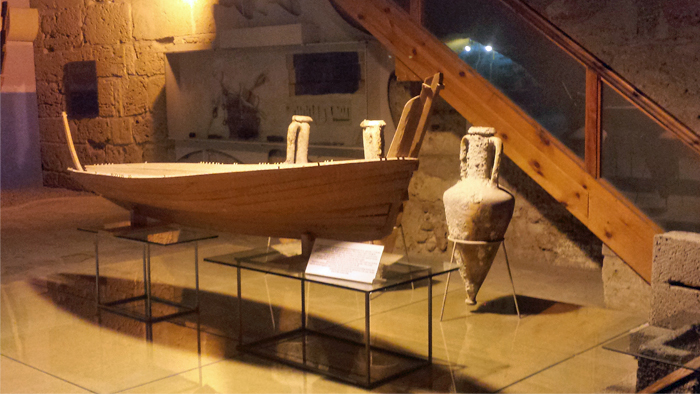
Model of ships hull ![]()
Andreas Cariolou discoved the Kyrenia shipwreck in 1965.

Andreas Cariolou
Reconstruction and the preservation of the ship took almost six years to complete and the museum was finally ready to be opened to the public in March 1976.
The ship is a really well preserved example of its type with 75% of it still intact. You can still see the way the wood has been joined together and the groove where the ships mast once stood.
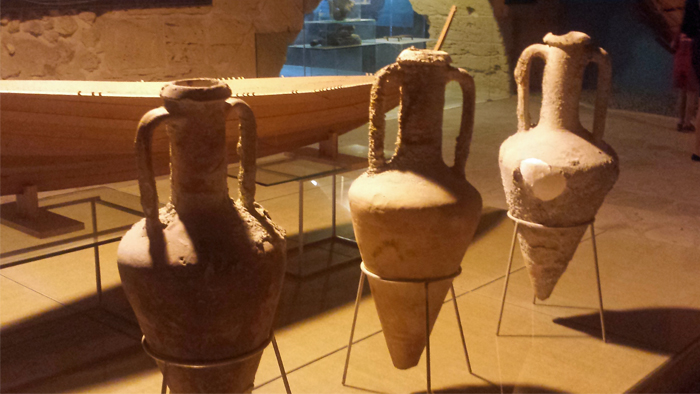
Amphora from the ship ![]()
The ship is approximately 47 feet in length and 15 feet wide. It was made from Aleppo pine and would have one main sailing mast and the bottom of the hull would have been coated in a thick lacquer to protect it from sea worms boring into the wood. It was built by joining its outer planks first using copper spikes and then building its internal struts which is the opposite way to the way modern ships are constructed.
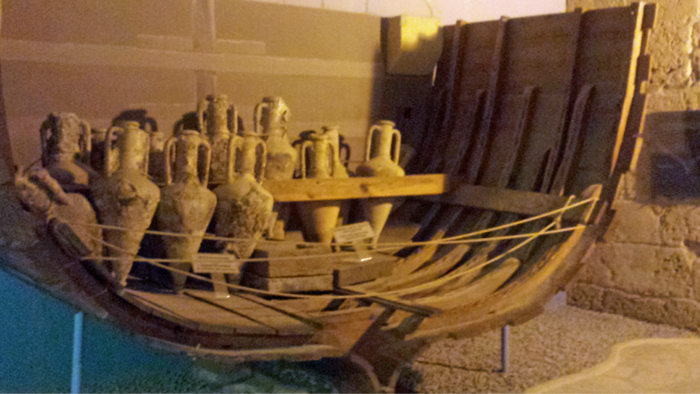
Amphora on a model of the ships hull ![]()
This ship probably only housed four people and would have been sailing and trading around the Mediterranean area around the time of Alexander the Great. The ship was quite old when it was sunk, possibly as much as 80 years old. Research shows that several fixes were made to the ship, including lead sheathing fixed to the outside of the ship to make it more water tight and a break in the ships keel which had also been mended. The Kyrenia Ship is the earliest example of lead sheathing ever being used on a ship.
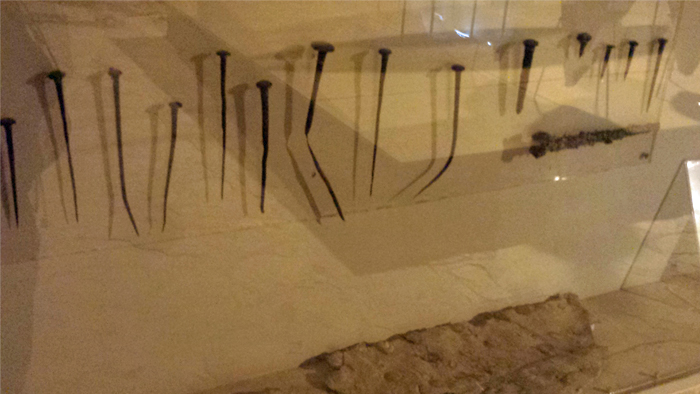
Pins and nails from the ship ![]()
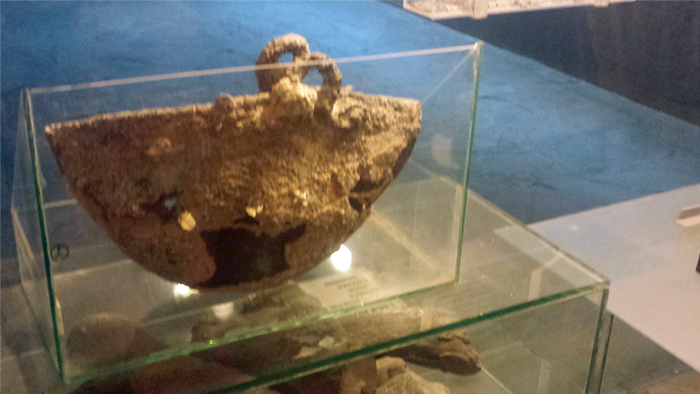
Crushed bronze bucket from the ship ![]()
General consensus is that the ship had been away trading and was returning to Kyrenia either because this was its home port or in order to carry on trading and may have sunk due to its age and being hit by a storm. The freight found on board originates from Rhodes, Kos and Samos. Found on board was nearly 400 amphorae for storing wine, grain mill stones for producing grain, almonds, lead weights for fishing and one coin. In the kitchen area wooden utensils and spoons, small bottles of olive oil and glass bottles were found.
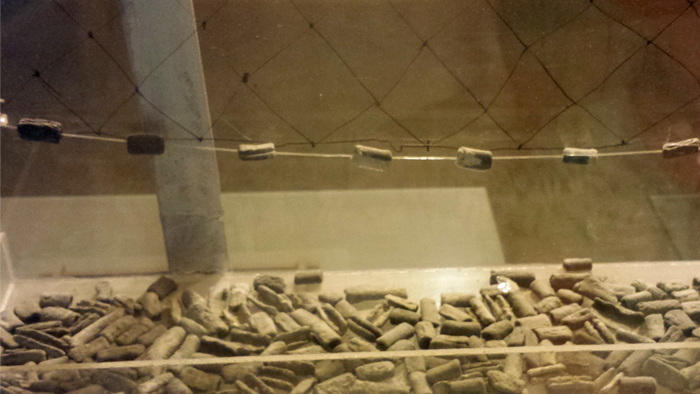
Lead weights for fishing nets ![]()
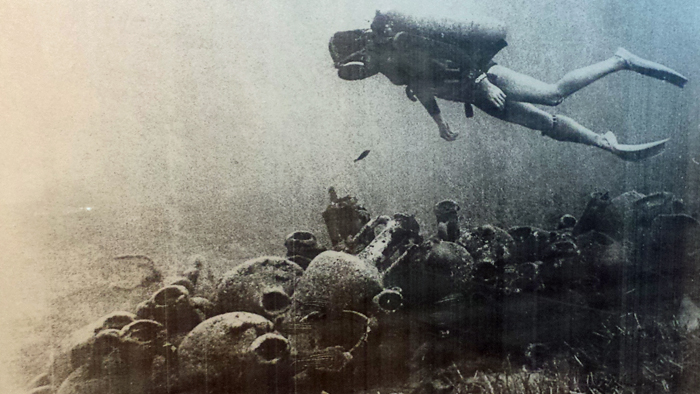
Diver at the site of the shipwreck ![]()
A video of the divers recovering the shipwreck and it’s objects.
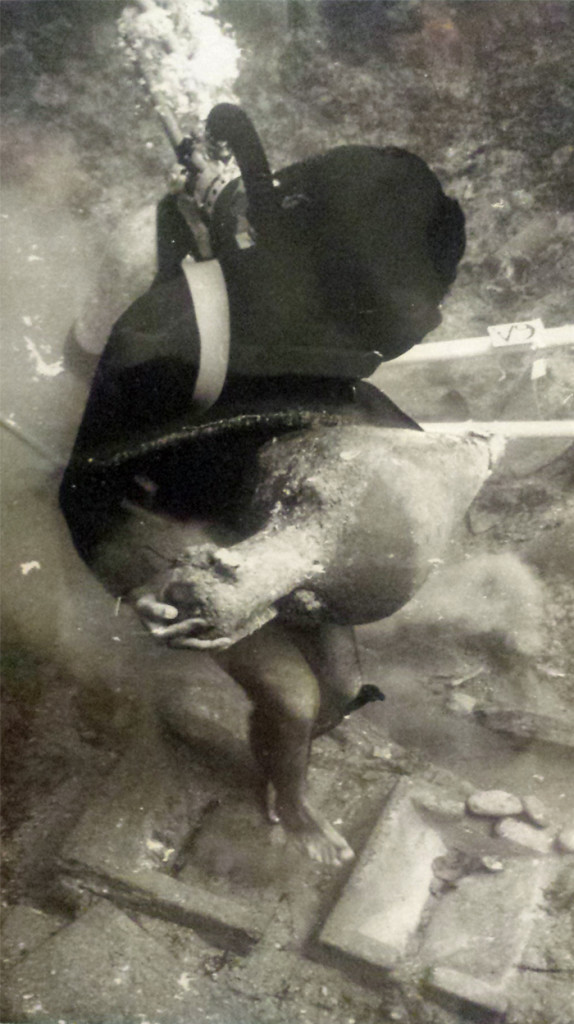
Diver recovering amphora at the shipwreck ![]()
The room where the actual shipwreck is stored in is fully air conditioned to ensure that the timbers are fully protected from corrosion and there is a walkway and viewing platform for visitors to be able to view the shipwreck from above.
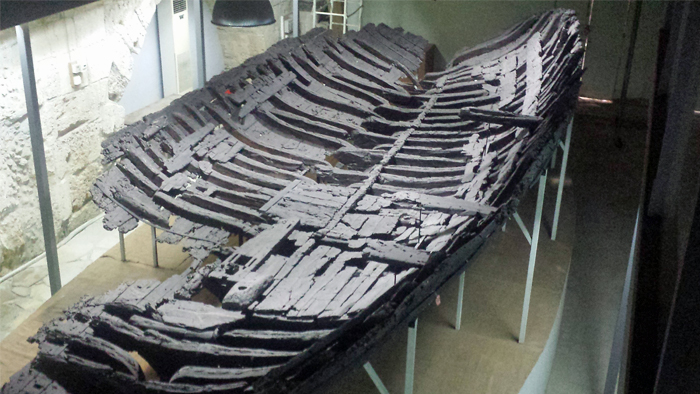
Kyrenia shipwreck ![]()
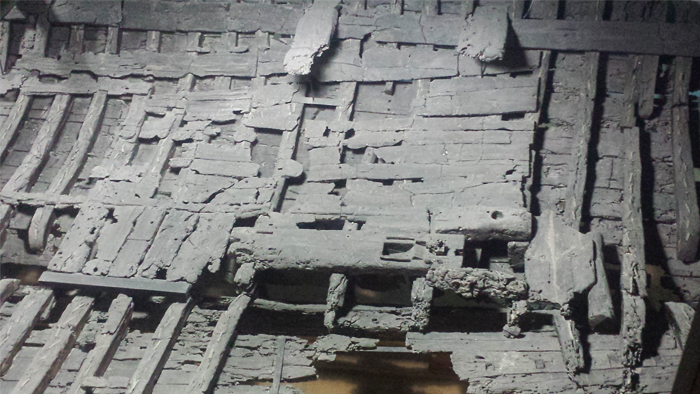
Kyrenia shipwreck detail ![]()
The latest theory as to why the ship sunk is that it may have been attacked by pirates. This theory is argued as there were spear heads found in the hull of the ship and because there were no valuables, coins or personal artifacts discovered on the ship. The pirates at the time would have looted the ship, captured the sailors as slaves and sunk it. A curse tablet was also found on the wreckage. It is said that these lead tablets are hammered onto a ship by pirates before scuttling it to curse the ship in order to protect themselves from their deeds. No one can really say for sure but finding the ship has added an immense amount of knowledge to scholars and tells us more about shipbuilding from this ancient era.
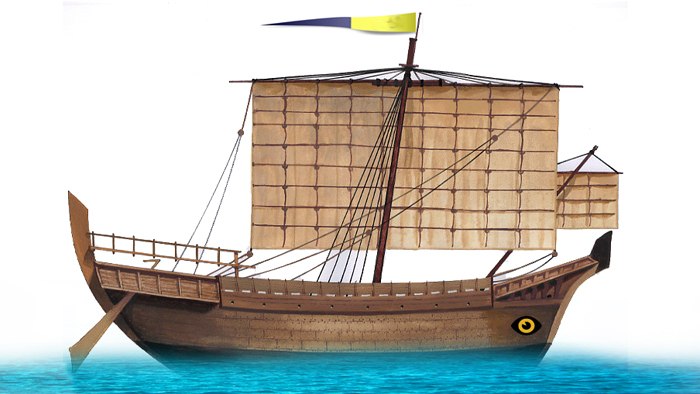
Kyrenia Ship as it might of looked. ![]()
You may also find interesting:
References
http://www.penn.museum/sites/expedition/the-kyrenia-shipwreck/
http://en.wikipedia.org/wiki/Kyrenia_ship
Katzev, Susan Womer. “The Ancient Ship of Kyrenia, Beneath Cyprus Seas.” Great Moments in Greek Archaeology. Ed. Pavos Valavanis and David Hardy. Oxford University Press, 2007. 286-99.

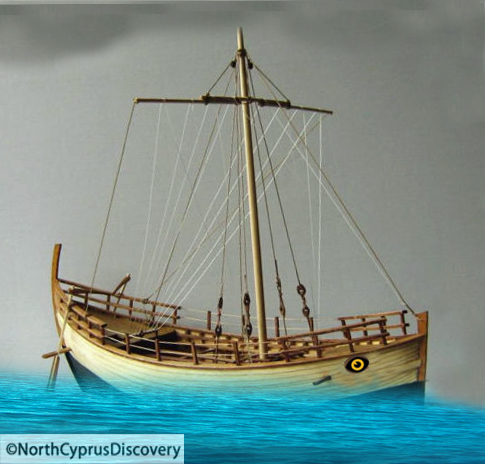
Hello! I’ve been following your website for a while now and finally got the
courage to go ahead and give you a shout out from Kingwood Texas!
Just wanted to tell you keep up the fantastic work!